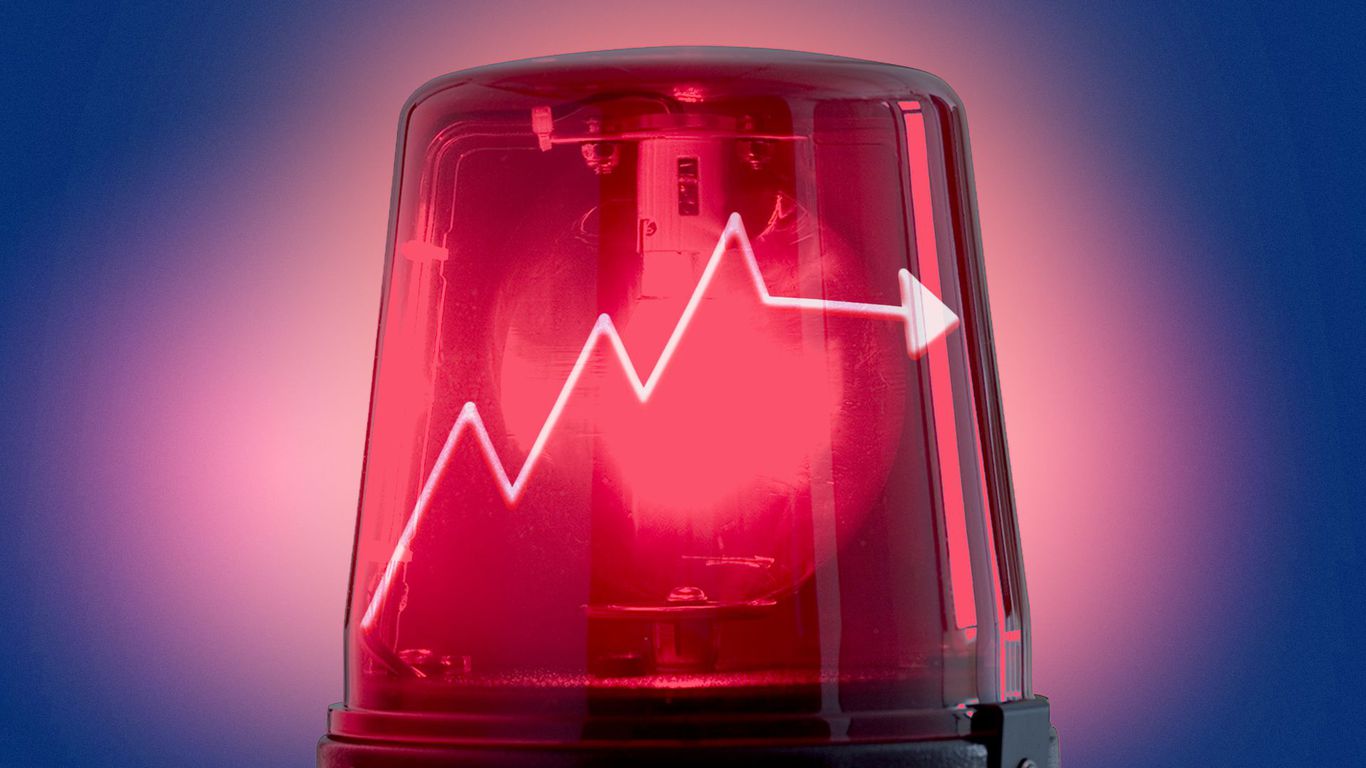[ad_1]
Much of this week has been spent talking about the “r” word. A more precise description of where things stand is the “s” word: stagflation.
Why it matters: The latest data on wages and inflation, combined with last quarter’s contraction, point to a mix of flat growth paired with persistently high inflation.
What’s new: Friday morning brought a dose of bad news for Federal Reserve chair Jerome Powell, courtesy of an indicator he watches closely.
- Wages and salaries rose at a record pace last quarter: 5.3% from a year earlier, according to the Employment Cost Index. Private-sector wages jumped ahead at an even faster 5.7% pace.
- That’s welcome news for workers (though many still aren’t seeing pay keep up with inflation), but it’s a problem for the Fed. Brisk pay hikes may make it difficult to slow inflation if businesses keep jacking up prices to offset rising labor costs.
That wasn’t the only troubling news on the inflation front: The Fed’s preferred gauge of inflation, which strips out food and fuel costs, reaccelerated — even more than economists expected.
- Core PCE rose 0.6% last month after holding at 0.3% since February, effectively shooting down any hopes this measure could be leveling off.
That brings us to the stagflation risk. Here’s a possible tell-tale sign: Core PCE rose 1.3% last quarter, or a 5.2% annualized pace.
- Meanwhile, final domestic private-sector sales — a good measure of underlying economic growth — came in at 0% in the April-June quarter.
What they’re saying: “The rest of the economy might be slowing down, but wages are speeding up,” Indeed economist Nick Bunker says.
- “Competition for workers remains fierce as employers have to keep bidding up wages for new hires,” he added. “These red-hot wage growth statistics may fade in the near term, but there’s a long way for them to drop.”
The bottom line: For all the recession discussion over the last week, the mix of flatlining growth and spiking prices goes a long way toward explaining why Americans are unhappy with the way things are going.
[ad_2]
Image and article originally from www.axios.com. Read the original article here.

